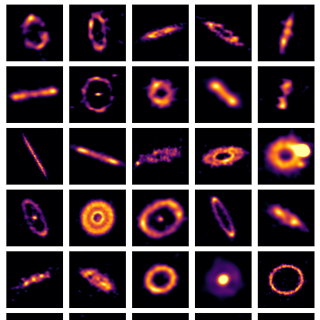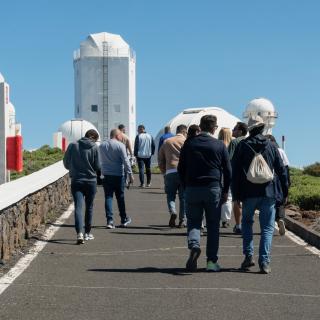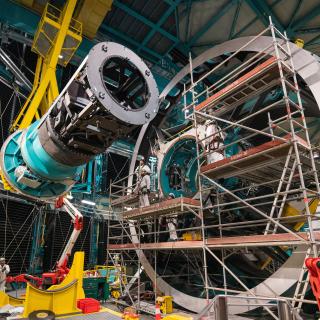For three days, 160 astronomers got together in the Castle of Chapultepec, in México City, where the “II International Congress of Science with the Gran Telescopio CANARIAS (GTC): Science with the First Light Instruments and the Gran Telescopio Milimétrico (GTM),” organized by the Instituto de Astronomía de la Universidad Nacional Autónoma de México (IA-UNAM) and the Instituto Nacional de Astrofísica, Óptica y Electrónica de México (INAOE), with the collaboration of the Instituto de Astrofísica de Canarias (IAC) and GRANTECAN, the Spanish public enterprise that manages the construction of the GTC at the Roque de los Muchachos Observatory (Garafía, La Palma).
The closing ceremony counted with the presence of Professors Stanley Dermott, Chairman of the Department of Astronomy at the University of Florida (USA); José Franco, Director of the IA-UNAM; José Guichard, Director of the INAOE; and Francisco Sánchez, director of the IAC.
Francisco Sánchez, after applauding the organization and work done, emphasized the importance of the scientific team formed by the GTC and the GTM, a dual facility that should be used as much as it can by scientific teams, especially for those of star formation and the early universe.
“ The concentration of observational ideas around high red-shift obkjects is admirable, -he pointed out- but it is necessary to continue working with objects that are near, which the core of Astrophysical knowledge is based on. It is therefore necessary to use these great telescopes to study the innumerable weak near objects, which could hide the key secrets to understand what is very far away.”
Sánchez also noted that the potential of OSIRIS, the first light instrument “has been patented, especially for studying objects with emission lines, in the local environment and at cosmological distances.” Moreover, he emphasized that the OSIRIS project is an example of participation, due to the fact that its optics have been designed and built in Mexico, the mechanics, electronics and the software in Spain. The INAOE has also participated in the optics of ELMER. On the other hand, the IA-UNAM has built the Verification Camera, which will soon be sent to the Observatorio del Roque de los Muchachos of the IAC, in Garafía (La Palma), location in which the GTC is being built.
The interest aroused by the scientific community about first generation instruments (OSIRIS, CanariCam and ELMER), second generation instruments (EMIR) and those to be developed in the future, as well as those visiting instruments, from other telescopes, like the CIRCE, UES, or CIRPASS has been very important.
Finally, Francisco Sánchez reminded everyone that the GTC’s doors are open to other countries’ ideas and efforts, so he invited the international scientific community to participate in the next meetings about science with the GTC.
In his participation, José Guichard pointed out that Astronomy in Mexico is making quick progress and that the collaboration with Spain and the United States through the University of Florida “is very important for a common advance: the Science that will be carried out with the GTC and GTM telescopes will be complementary and primordial for the younger generations of astronomers and astrophysicists.”
Stanley Dermott reminded the people present that the University of Florida is building a First Light instrument, CanariCam, and reviewed the previous projects developed by teams of the Department of Astronomy which have increased the expertise in the construction of infrared instruments.
In the same way, he pointed out that the GTC has many challenges: in the first place, to establish “Key Projects” that will make Science with the GTC be revolutionary form the first moment and, in second place, develop good second generation instruments that will be competitive once new space projects start functioning, like the James Webb Space Telescope (JWST).
Finally, José Franco, after thanking the people present for their participation in the congress, insisted in the importance of the collaboration between the three countries and the need to continue forming bonds between the scientific communities to achieve, with shared work, new discoveries and fruitful results in the study of the Universe.


